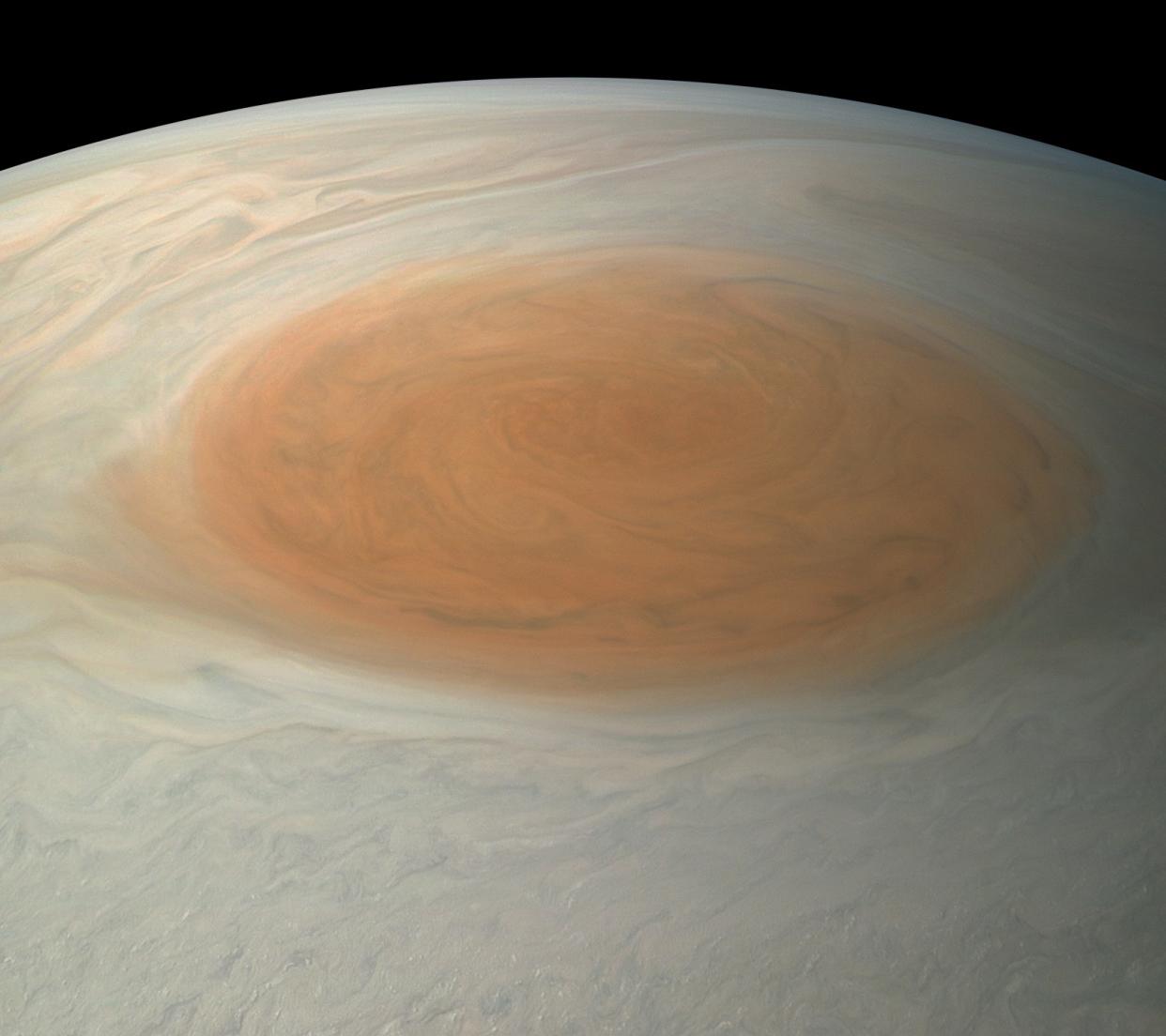Incredible video from NASA probe as it peers into Jupiter’s mysterious Great Red Spot

NASA’s Juno spacecraft has sent back an incredible animation of Jupiter’s Great Red Spot, the gas giant’s iconic, 10,000-mile-wide storm.
The animation, based on data from the probe, shows unknown features of the Spot – a storm monitored since 1830 and possibly existing for more than 350 years.
‘One of the most basic questions about Jupiter’s Great Red Spot is: how deep are the roots?’ said Scott Bolton, Juno’s principal investigator from the Southwest Research Institute in San Antonio.
Juno data indicate that the solar system’s most famous storm is almost one-and-a-half Earths wide, and has roots that penetrate about 200 miles (300 kilometers) into the planet’s atmosphere.’
The Juno spacecraft flew over the storm this year passing just 5,600 miles above the storm, and collected crucial data on the storm.
The Juno probe has taken five years to make the 1.7 billion mile journey to the solar system’s largest planet – and is now gathering data on the mysterious gas giant.
This animation takes the viewer on a simulated flight into, and then out of, Jupiter’s upper atmosphere at the location of the Great Red Spot.
MOST READ ON YAHOO UK TODAY
Facebook ex-boss BANS his kids from using it as he says app ‘is ripping society apart’
Woman dies after being hit by FOUR vehicles – and none of the drivers stopped at the scene
House fire which killed three children was started ‘by flammable liquid poured down chimney’
Suspect in New York failed pipe bomb blast targeted subway ‘because it had Christmas posters’
The tallest pagoda in Asia has just been completely destroyed by fire
Temperatures plunge to -13c on UK’s coldest night in 20 months and Britons couldn’t cope
It was created by combining an image from the JunoCam imager on NASA’s Juno spacecraft with a computer-generated animation.
The science instrument responsible for this in-depth revelation was Juno’s Microwave Radiometer (MWR).
In the 19th century, the Great Red Spot was well over two Earths wide.
But in modern times, the Great Red Spot appears to be diminishing in size, as measured by Earth-based telescopes and spacecraft.
At the time NASA’s Voyagers 1 and 2 sped by Jupiter on their way to Saturn and beyond, in 1979, the Great Red Spot was twice Earth’s diameter.
Today, measurements by Earth-based telescopes indicate the oval that Juno flew over has diminished in width by one-third and height by one-eighth since Voyager times.

 Yahoo News
Yahoo News 

